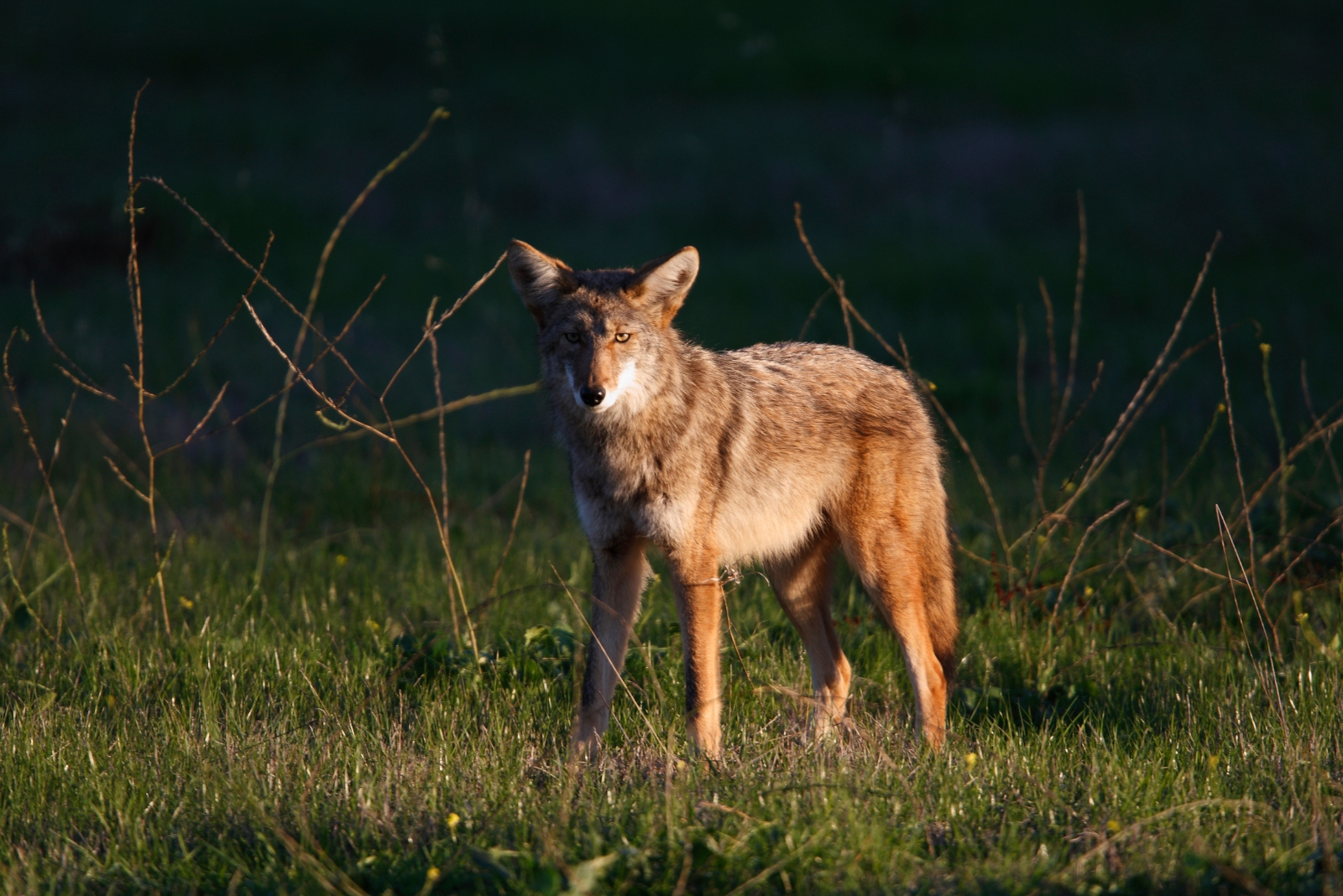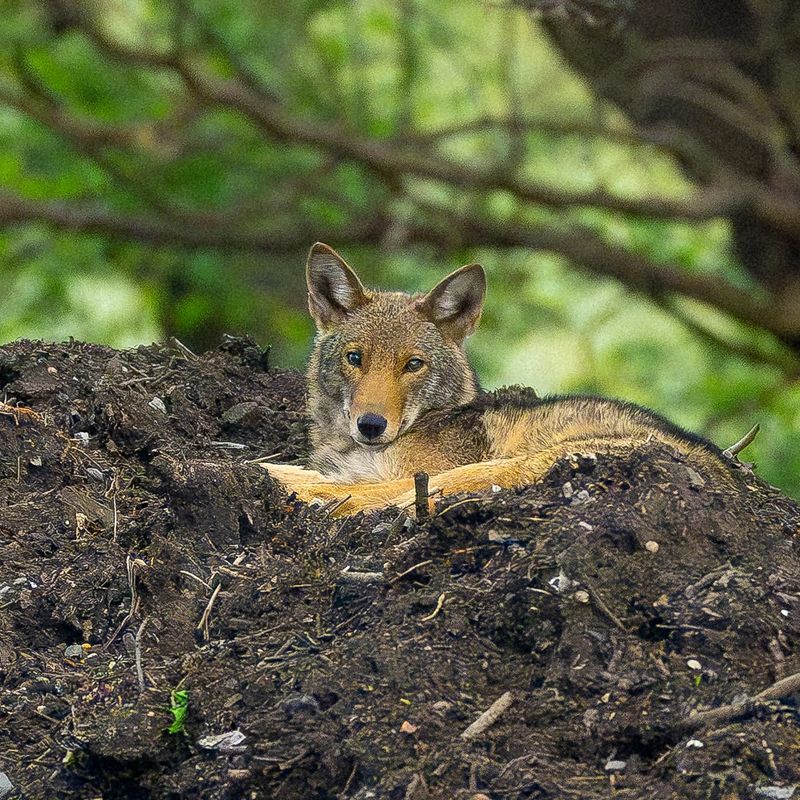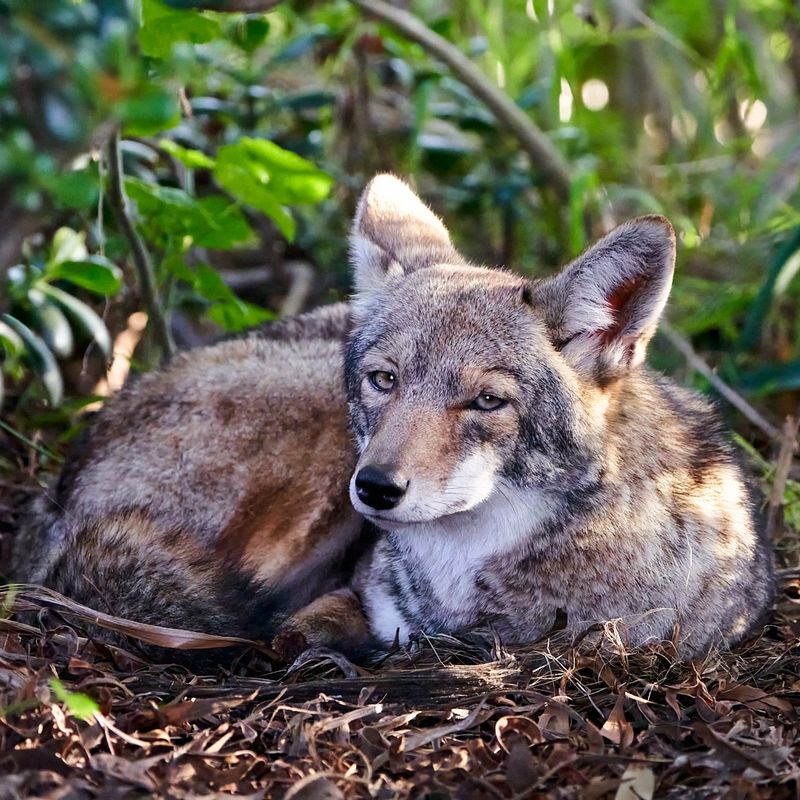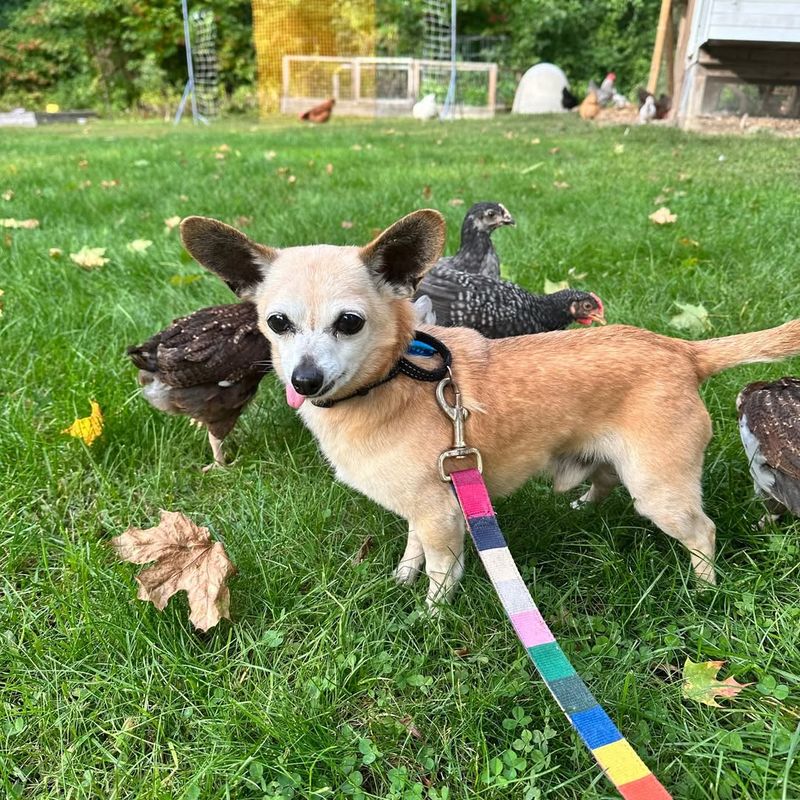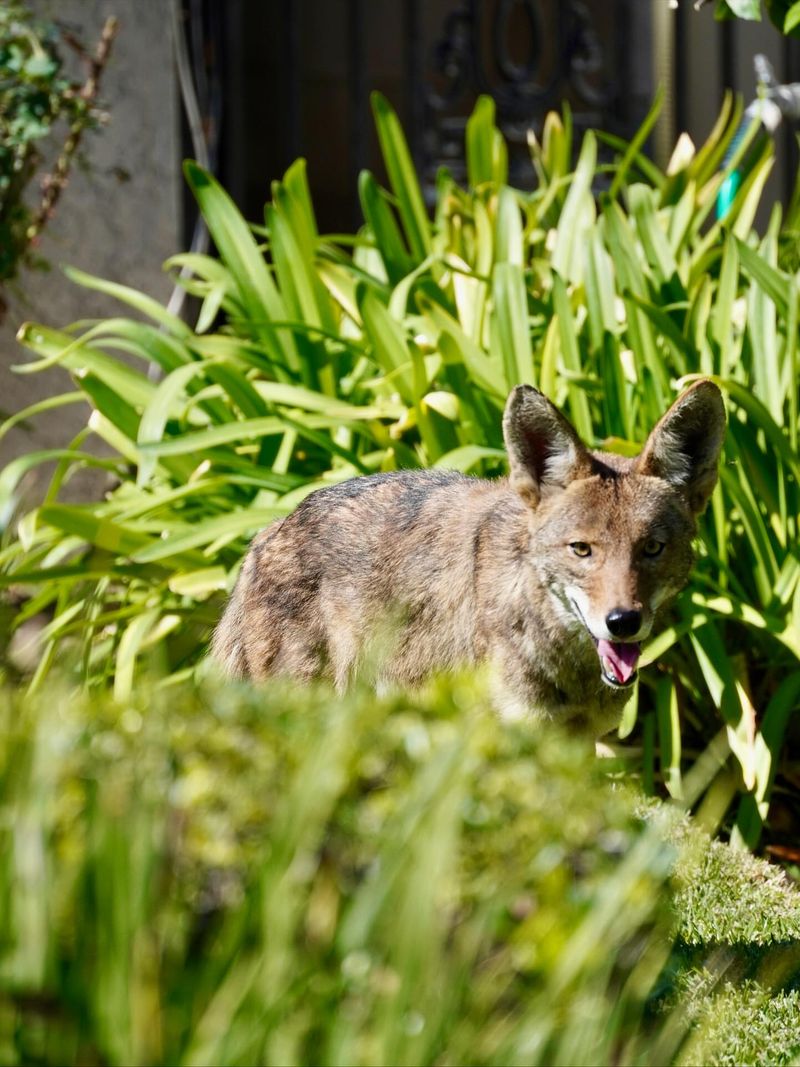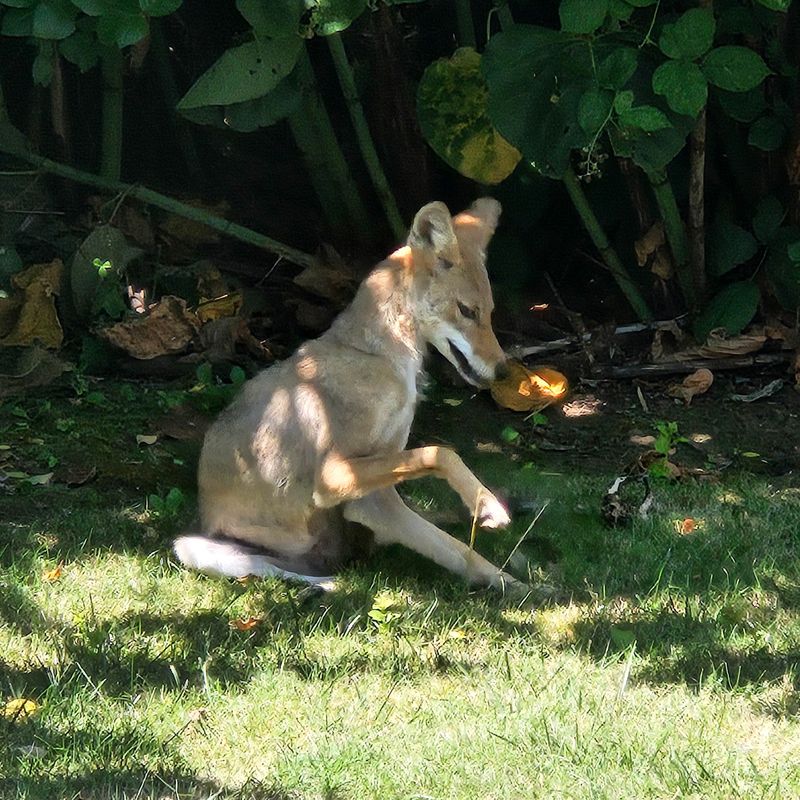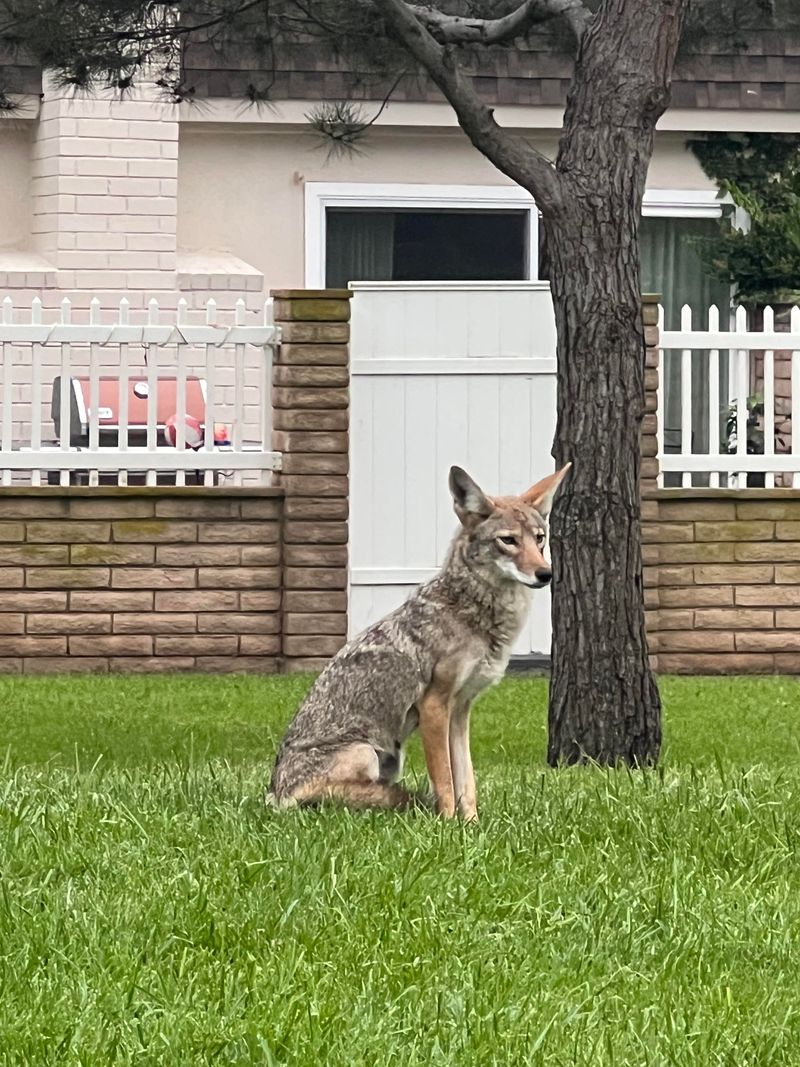Coyotes in New Hampshire have a way of showing up at the most random moments, and it can jolt your nerves for a second.
I spotted one near my driveway once, and it made me rethink every move I was about to make. Staying calm is the real secret, because panicking only makes things feel bigger than they are.
With the right steps, you can handle the moment safely without turning your yard into chaos.
1. Make Yourself Look Big and Intimidating
Stand tall and raise your arms above your head to appear larger than you actually are. Many New Hampshire residents find this technique surprisingly effective when coyotes wander too close.
Wave your jacket or shirt around to create movement that catches the animal’s attention. Stepping toward the coyote while maintaining this posture usually encourages it to back away.
Confidence matters here—showing fear might make the coyote curious rather than cautious about approaching you further.
2. Create Loud Noises to Startle the Animal
Yell, clap your hands, or bang pots and pans together to produce startling sounds. Across New Hampshire neighborhoods, homeowners keep noisemakers near their back doors for exactly this purpose.
Whistles, air horns, and even shaking a can filled with coins work wonderfully to frighten coyotes away quickly. The sudden noise disrupts their comfort zone and sends them running.
Keep making noise until the coyote leaves your property completely and disappears from sight.
3. Bring Pets Indoors Immediately
Small dogs and cats look like prey to hungry coyotes, so getting them inside is your top priority. New Hampshire pet owners have learned this lesson after several close calls in recent years.
Call your pet calmly but firmly, avoiding panicked movements that might trigger the coyote’s hunting instincts. Carry smaller animals if they don’t respond quickly enough.
Never leave pet food outside, as the smell attracts coyotes and other wildlife to your property regularly.
4. Report the Sighting to Local Wildlife Officials
Contact your local New Hampshire Fish and Game Department to document the encounter and learn about coyote activity patterns in your area. Wildlife officials track these sightings to monitor population changes and potential dangers.
They can provide specific advice based on your neighborhood’s situation and history with coyotes. Reporting helps protect your neighbors too, especially families with young children or outdoor pets.
Keep a record of dates and times when coyotes appear for future reference.
5. Never Feed or Leave Food Accessible
Feeding coyotes, whether intentionally or accidentally, teaches them to associate humans with easy meals. Throughout New Hampshire, this mistake has led to bolder coyotes that lose their natural fear of people.
Secure your garbage cans with tight lids and bring pet food bowls inside after meals. Bird feeders also attract coyotes indirectly by drawing rodents and small animals they hunt.
Once coyotes find reliable food sources, they’ll keep returning to your yard repeatedly.
6. Don’t Run Away or Turn Your Back
Running triggers a coyote’s natural chase instinct, turning you into something that resembles prey. New Hampshire wildlife experts emphasize that staying calm and facing the animal is much safer than fleeing.
Back away slowly while maintaining eye contact and keeping the coyote in your field of vision. Turning your back signals vulnerability and might encourage the animal to follow or approach closer.
Move deliberately toward your house without rushing or making sudden movements that startle it.
7. Avoid Letting Children or Pets Approach
Children might think coyotes look like friendly dogs and want to pet them, creating an extremely dangerous situation. New Hampshire parents must teach kids that coyotes are wild predators, not cuddly companions.
Keep children close to you and explain firmly why they cannot go near the animal. Curious pets might also try investigating the coyote, risking serious injury or worse.
Supervise outdoor playtime carefully in areas where coyotes have been spotted before.

